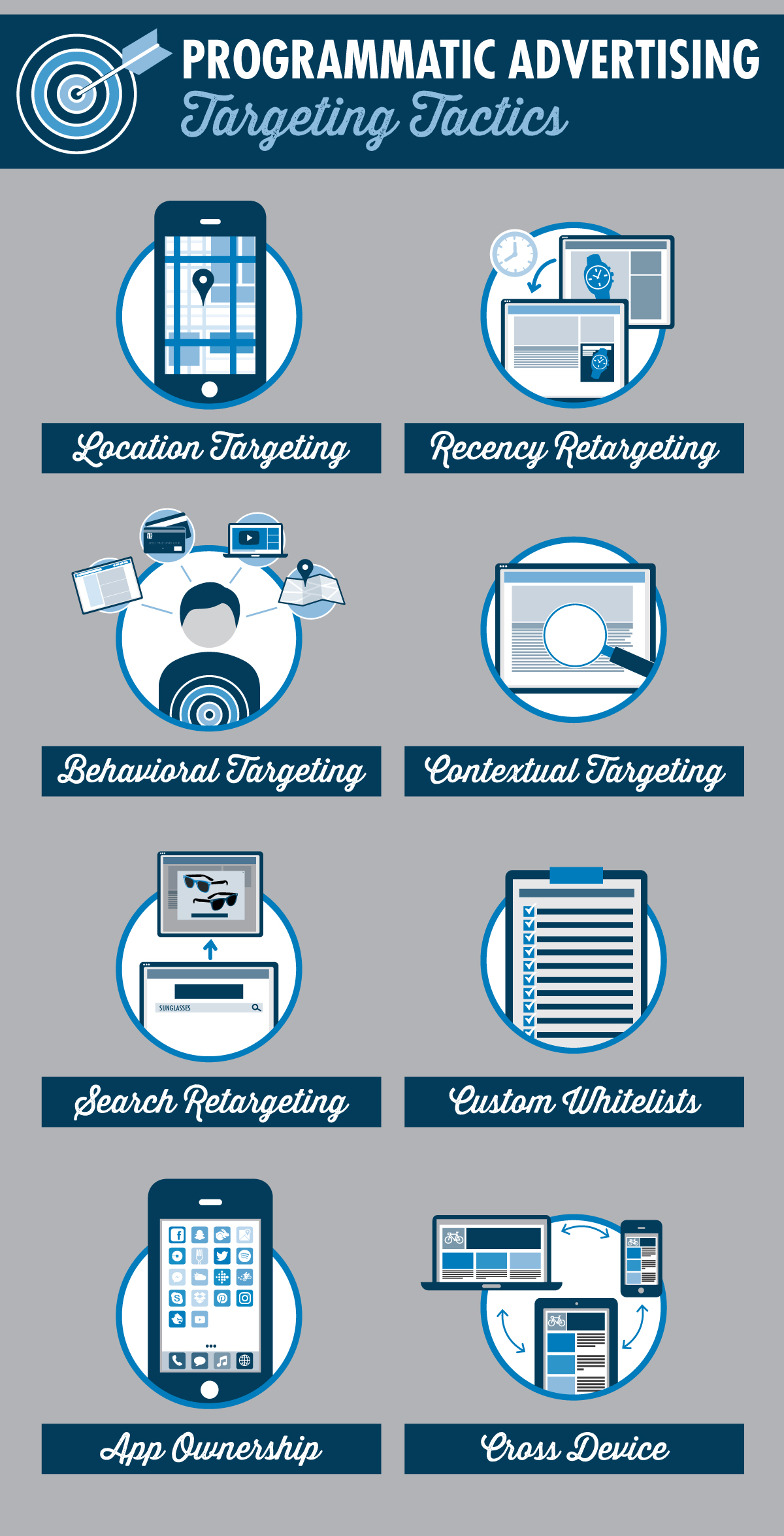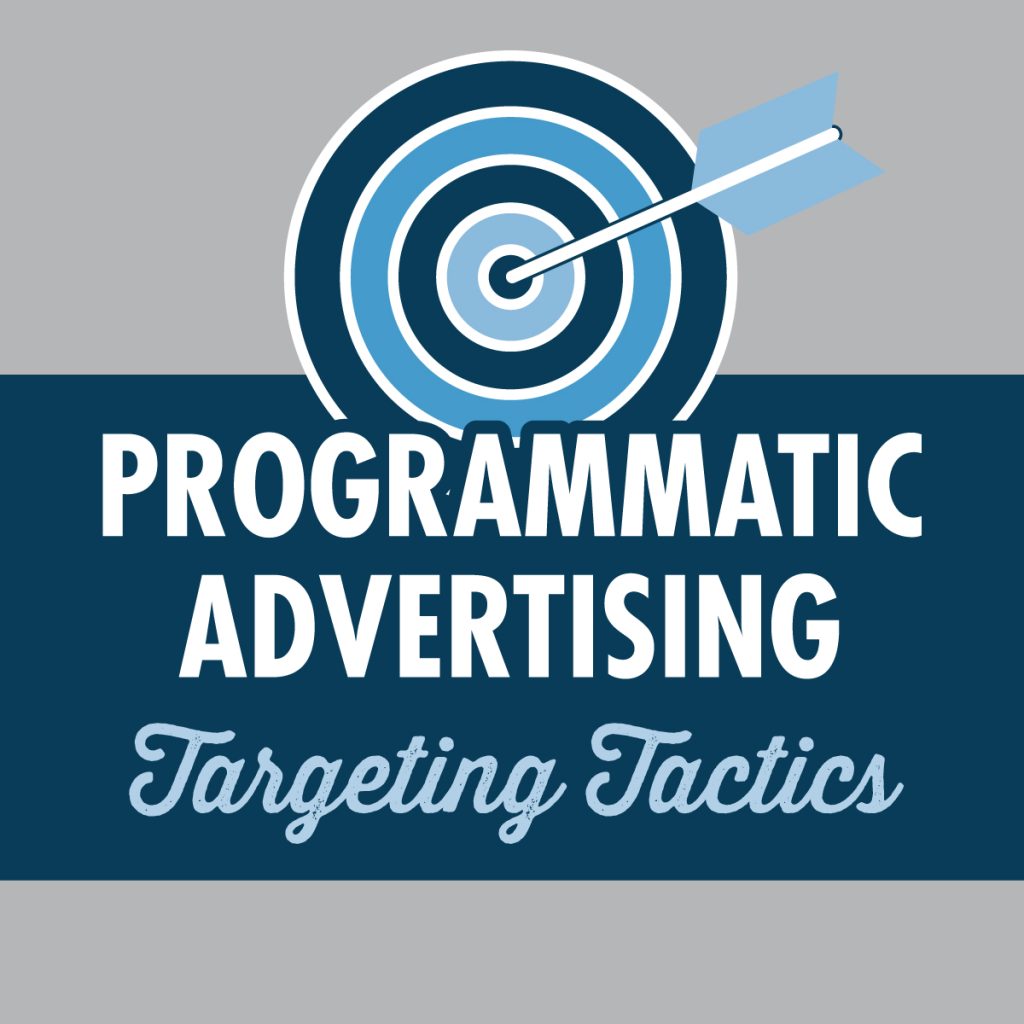The thought of digital advertising can overwhelm many marketers, particularly those that have yet to fully engage with what seems like endless opportunities available in today’s online marketplace. Just reading a case study or news article can feel like you’re trying to decipher a foreign language. One term we often see misunderstood is “programmatic advertising.”
What is Programmatic Advertising?
In short, programmatic advertising is the use of software to automate the purchase of digital advertising that strategically targets an audience. Most programmatic ads are purchased through a 3rd party. In this scenario, an ad buyer (brand, agency, etc.) manually enters their campaign parameters and allows programmatic software (referred to as a Demand Side Platform, or DSP) to utilize 1st and 3rd party data to execute the campaign where it sees optimal.
One explanation for the misperceptions related to programmatic may be due to its evolving nature over the past few years. At its inception, programmatic was viewed
as a method to purchase a high volume of digital ad inventory at a low cost. As the saying goes, “you get what what you pay for,” and many marketers felt this remnant ad inventory sold on an exchange by publishers wasn’t the best option for their clients. However, advancements in machine learning and data sharing have transitioned programmatic to the most prevalent way to purchase digital advertising.
Why Should You Care?
Currently, programmatic buying accounts for 78% of the total digital spend in the United States. Experts predict that programmatic advertising could account for85% of banner ads and 67% of streaming video ads by 2020. Additionally, we have seen the programmatic model begin to extend to over-the-top (OTT) television, radio, and outdoor advertising. So, suffice it to say that programmatic advertising isn’t going away anytime soon.
Programmatic advertising is exciting for businesses because it allows them to specifically target individual consumers rather than featuring broad creative that may not resonate with all audiences. Programmatic software is able to sort through an abundance of data points, either uploaded by the client or accessible by the DSP, as well as traditional cookies and device ID data to optimize campaign performance.
Programmatic Targeting Tactics
Programmatic marketing can target consumers in more efficient ways than ever before. A few of the popular tactics we consider with programmatic campaigns for our clients include:
- Location Targeting – targets an audience by geo-fencing an area and using the user’s IP address or device ID. While this tactic can also review past geographic history, we don’t recommend going back more than 3-6 months.
- Recency Retargeting – we’ve all visited a website and then had an advertisement appear for the brand we recently viewed. Recency retargeting with programmatic can take this one step further, by ensuring that your audience isn’t inundated with ads following a web visit. Using a variety of algorithms, programmatic software is able to optimize the frequency and best time of day to serve up the ad.
- Behavioral Targeting – this tactic utilizes 3rd party data to identify and target an audience that will be receptive to your campaign. Data analyzed includes online activity, social media behavior, and credit card purchases. Very big brother esque.
- Contextual Targeting – rather than delivering impressions sitewide, software can review the content of the web page and determine if the messaging aligns with your target audience.
- Search Retargeting – serves display or video ads to audiences searching for relevant keywords on popular search engines. This tactic should not to be confused with traditional search engine marketing (SEM).
- Custom Whitelists – most programmatic media partners allow you to create a custom whitelist for websites you feel most closely align with your target audience. While this tactic comes at a premium, we usually suggest including it at the beginning of a campaign to compare performance. On the flipside, every programmatic partner worth their salt will provide you brand safety options that include blacklisting sites that do not align with your brand.
- App Ownership – as apps continue to be ingrained into our everyday lives, many programmatic partners can review apps a phone has downloaded and incorporate them as a tactic in your campaign. This can be extremely helpful when attempting to create lookalike audiences.
- Cross Device – the global digital consumer now owns more than 3 connected devices. This makes it all the more difficult to engage with your audience with the right message on the right device. The best programmatic partners have the capabilities to do just that.
We hope that this has provided you with a basic overview of programmatic advertising and the variety of tactics that can impact your digital marketing campaign. Be sure to read our post on three steps to creating a successful Facebook advertising campaign, and if you are looking for a partner to help with your digital efforts, give us a call.

